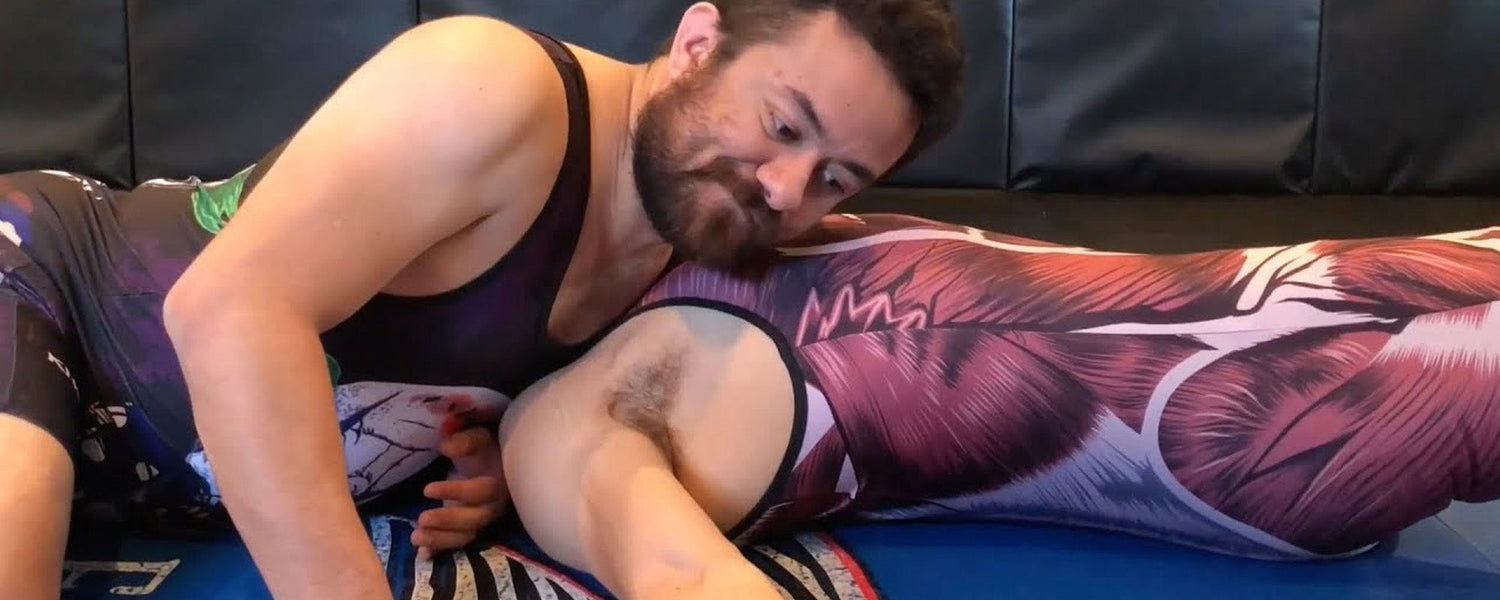Table of content
1. What Is a Dragon Sleeper?
The dragon sleeper is considered the most dangerous move in jiu-jitsu. Some people think that it should not be allowed in Brazilian Jiu-Jitsu competitions. It is named after a sleeper it is a choke, but in reality, there is no choking involved in this technique.
The technique of a dragon sleeper involves a straight-up neck crank and a spinal lock that could badly hurt someone. It is very effective, but special care and attention is required with its application. So if you are going to apply the Dragon Sleeper, make sure to be very careful.
2. The Origin of Dragon Sleeper
The move of the Dragon Sleeper came from professional wrestling. It is a technique that holds the set moves and pins that are used by performers. The wrestlers use it to immobilize their opponents or lead to a submission. Some of the wrestlers use these holds as finishing maneuvers.
In the professional wrestling dragon sleeper was originated by the Japanese top wrestling legend Tatsumi Fujinami. the style of Fujinami was based on pro wrestling art, it was more realistic, and his methods were legitimate. Tatsumi Fujinami was known with the name “The Dragon” due to his drastic moves and methods. He invented two unique moves which were a submission hold and a suplex. These methods were named after his nickname Dragon Sleeper, later this method became part of the grappling art of jiu-jitsu and in MMA competitions.
The technique of Dragon Sleeper is more scary than its name is. It is the submission method of a neck crank, that has its deep roots in wrestling. It is arguably one of the most dangerous submission methods one can apply in a bout.
3. Methods to apply Dragon Sleeper
The name Dragon Sleeper sounds terrible itself, and so does its application. To apply the Dragon Sleeper technique, you need to start from the classic North-South Head or from the Arm Choke.
Make sure to emphasize the correct application of the method while using the dragon sleeper. After the application of the method, you should move yourself toward the opposite side of the choke. The art of grappling involves the use of methods that change rapidly.
Basically, dragon sleeper is the reverse method of the guillotine that can be applied from two positions, the first is from the back and the second is from the north-south position. In reality, it is similar to the neck crank and a spine lock not like a choke. Note that Dragon Sleeper is a painful submission as compared to the normal guillotine choke. The jiu-jitsu fighter is required to bend the opponent’s neck in a backward direction. They need to do it with the incredible pressure that is severely applied to their neck and spine at the same time. It is one of the submission methods that you do not want to be put in.
3.1. Back Mount Position
One technique is to set up the dragon sleeper on the back mount. This could be applied from the failed RNC attempt, or a fighter can either apply a fake rear-neck choke to set up this method. The first step is to grab your opponent completely with the technique of the back mount. Make sure to hook around the body of your opponent by keeping no space in between. Keep your chest steady with the back of your opponent.
Your opponent might attempt to escape from the RNC attempt. They are in the position where the chin is down and the hands are directed upwards. You need to use the rapid application of Dragon Sleeper by using your forearm, at the same time you are required to push your opponent's head to one side, and then with the quick wrap, you need to grab the front of their neck. The last step is to put your hand on your chest, sit, move backward, and lock in the dragon sleeper position.
The jiu-jitsu grappler can use the second technique of back mount, which includes grasping the arm of your opponent instead of their neck, As in the first method, the fighter has to grab the neck of the opponent and try to grip the arm side by side.
Primarily these are the same techniques that are applied for the kimura trap setup. If you apply this method, your opponent will consider that you are about to hold their arm and will defend it. At that time, they will leave a space open for holding, as their neck is wide open. All you need to do is wrap your arm around their neck from the front and, at the same time, pull your other arm in. Hold your hands together and widen your body backward.
3.2. North-South Choking Position
This dragon sleeper setup can be applied after a failed attempt at a north-south choke. Suppose you are in the north-south going to apply a choke, but you are being messed up in an attempt and now the opponent is making an escape.
Now the next part is to think about the other submission method, which is to apply the dragon sleeper instead of a north-south choke.
As your opponent tries to escape, he might make a turn, and attempt to get on their knees. At this point, you can block their way by wrapping your arm around their body.
Use your leg and hook around the body of your opponent; after that, you have to use your arm and leg to pull your opponent to the other side. Meanwhile, pull their body and lock their opponent in a body triangle; it would keep them in place as your arm is already wrapped around your opponent’s neck from the north-south choke attempt. Remember, jiu-jitsu is the art of grappling; if some of the techniques do not work, you can switch to the next. In this case of north-south choke application, you can switch back to the rear naked choke.
4. Submitting with Dragon Sleeper
If you want to finish the Dragon Sleeper successfully, you need to control the opponent's head and make sure there is no space to leave. Suppose you are holding a tight guillotine or north-south choke. As you have started with the traditional north-south head and arm choke tp prepare yourself for the dragon sleeper method. It has been recommended to slightly shift your side of the choking hand. In the next part slightly draw the opponent's head in the upward direction, then approach them with the leg near to them to apply the hook. Cross the knee across their ribs
After this step, you have to bring your arms to the back and bring your head downwards towards the floor. Simultaneously, you have to move a bit forward and strike the opponent back. The opponent's head is being forced in the opposite direction of the body, which causes extreme tension. In this way, you can cause the opponent to tap, as there is too much pressure on the neck, as the force is combined with the pressure of the arms. As the crank, the dragon sleeper is too much for the grappler, even for the toughest opponent. As you are, choking their throat. Note that extra care is needed while drilling this method.
5. 7 Tips for Appling a Dragon Sleeper
The dragon sleeper is a unique technique that could start from two positions, that is the North-South head and from the back mount. Grapplers of jiu-jitsu know that dragon sleeper works differently. When you try the guillotine from the back, this is basically a dragon sleeper.
Dragon Sleeper is the most effective submission method, but you need to remember certain details while locking up your opponent. Down below are certain tips that will help you lock in a perfect sleeper.
Wrap Around:
The technique is to wrap around the front side of your opponent's neck. Remember not to use the common arm wrap, but use the guillotine choke.
Back Mount/ North-South:
If you want to set up the technique of dragon sleeper, make sure to acquire the position so that you can grab your opponent from the back by using the technique of back mount or north-south position.
Extend Backwards:
If you extend your body backward then you can lock in a perfect dragon sleeper.
Stay Tight:
The useful tip is to stay as tight as possible, to be the top grappler. it is the technique that is being followed by the jiu-jitsu fighter.
The Use of Hooks:
Remember, the application of the BJJ techniques at an accurate time and position is mandatory.
To set up a dragon sleeper, hug your opponent and use the north-south method with your arm, and at the same time, hook your leg around your opponent.
Pull Your Opponent Inwards:
After you have applied your hooks, the next step is to pull your opponent to the other side of the hooks.
Additional Grips:
As an additional step to secure your position, you have to grip your hands together. Just like in a guillotine position, you might place your hand on your chest and at the same time extend backward.
Extend in a backward position:
Once you are sure that you have locked in a position then you can extend your body backwards to secure or lock in the dragon sleeper.
Be Cautious:
The move of a dragon sleeper is a combination of a spine lock and a neck crank. You are required to make the move with dedication and care. The main point is to get the tap from the opponent without hurting them.
6. FAQs
6.1. Are dragon sleepers allowed in jiu-jitsu?
The Dragon Sleeper is the most dangerous submission in Brazilian jiu-jitsu. Much care is needed in the application of this method. The technique of the dragon sleeper can be used in jiu-jitsu. It is a legitimate submission method in BJJ competitions.
6.2. Is Dragon Sleeper Dangerous?
Dragon sleeper is the scariest method, as it is the neck crank submission that is originated from wrestling. It is the most dangerous submission technique you can ever hold in jiu-jitsu as there is maximum pressure on your neck and spinal cord.
7. Final Thoughts
Although dragon sleeper seems to be a terrible move, it is a reliable and effective technique. Remember to practice the technique with patience and care, the use of the cranks makes it difficult for the opponent to escape from it. As Dragon Sleeper fully locks the partner in space, the use of the reverse guillotine makes a rapid difference. Most people consider it to be illegal but note that it is not easy to get tapped by it. If you have a dragon sleeper in your arsenal then you will get the maximum chances to give tough time to your opponents.
Photo Credit: @VerbalTapCast









Leave a comment
This site is protected by hCaptcha and the hCaptcha Privacy Policy and Terms of Service apply.